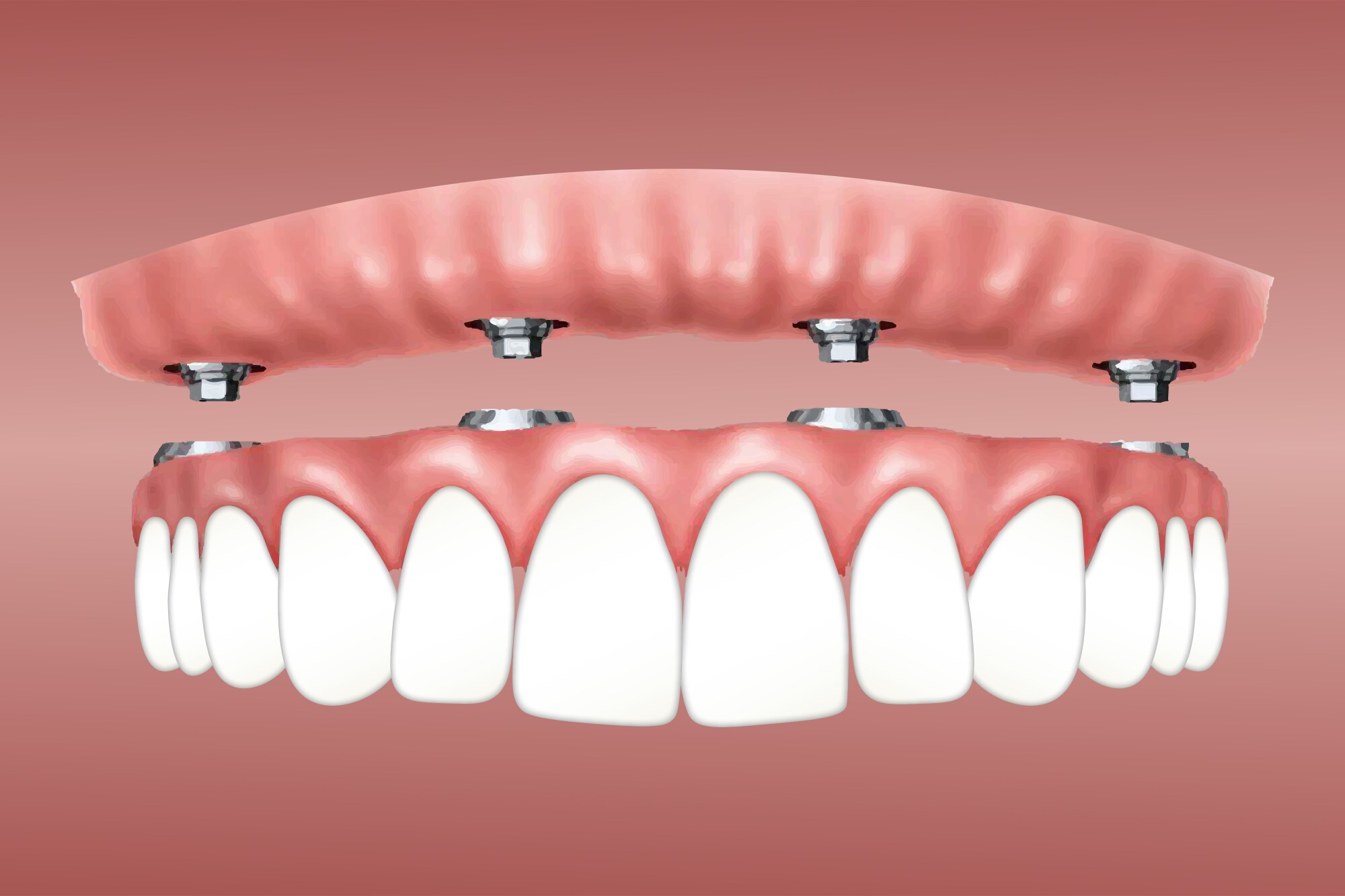Our Dental Sense Diaries
Table of ContentsThe 2-Minute Rule for Dental SenseSome Known Details About Dental Sense Getting My Dental Sense To WorkThe smart Trick of Dental Sense That Nobody is Talking About
are medical devices operatively implanted right into the jaw to recover an individual's ability to chew or their appearance. They give support for man-made (fake) teeth, such as crowns, bridges, or dentures. When a tooth is shed due to injury or illness, an individual can experience issues such as quick bone loss, defective speech, or adjustments to chewing patterns that cause pain.Dental implant systems include a dental implant body and oral implant joint and may likewise consist of an abutment fixation screw. Dental implants. The oral implant body is operatively inserted in the jawbone in place of the tooth's root. The dental implant abutment is usually affixed to the dental implant body by the abutment fixation screw and expands through gum tissues right into the mouth to support the attached man-made teeth
(https://dentalsense1.wordpress.com/2025/01/11/dental-implants-root-canal-procedures-professional-teeth-whitening/)Structure of The Dental Implant System choosing dental implants, talk to your dental supplier concerning the prospective benefits and dangers, and whether you are a prospect for the procedure. Points to take into consideration: Your overall wellness is an important element in identifying whether you are a great prospect for oral implants, exactly how long it will take to heal, and how much time the dental implant may remain in place.
Cigarette smoking might influence the healing procedure and lower the lasting success of the implant. The healing procedure for the dental implant body may take a number of months or longer, during which time you commonly have a momentary abutment in area of the tooth. the oral implant procedure: Carefully follow the dental health guidelines offered to you by your oral company.
Dental Sense Fundamentals Explained
Implant failure can result in the requirement for another surgery to deal with or replace the dental implant system. Restores the capacity to eat Recovers cosmetic appearance Helps keep the jawbone from shrinking due to bone loss Protects the wellness of the surrounding bone and gums Helps maintain adjacent (close-by) teeth secure Enhances top quality of life Damage to surrounding natural teeth during dental implant positioning Injury to the surrounding tissues throughout surgical treatment, such as sinus opening Injury throughout surgical procedure (for instance, fracture of surrounding jawbone) Insufficient function, such as really feeling like the teeth do not bite together normally A feeling that the tooth is loose or twisting in place arising from a joint screw loosening Implant body failing (looseness of the implant body) due to systemic infection, which may be more probable in people with uncontrolled diabetes due to neighborhood infection in bone and gum tissues supporting the dental implant body because of delayed healing, which might be most likely in clients who smoke Difficulty cleansing the gums around the implant, leading to inadequate dental health Untreated gum disease Post-surgical tingling because of nerve impingement or damages Always inform healthcare companies and imaging specialists that you have oral implants prior to any type of magnetic resonance imaging (MRI) or x-ray procedures.
FDA is not familiar with any type of negative events reported for MRI or x-ray procedures with oral implants. Dental implants systems are generally constructed from materials that adhere to global consensus requirements of the International Organization for Standardization (ISO) or ASTM International. These standards have information of what makes a safe material.

A dental implant is a framework that replaces a missing tooth. With screw-like gadgets, the surgeon inserts an implant into the jawbone, and it acts as an anchor for an artificial tooth, called a crown. A tool called an abutment connects the man-made tooth to the dental implant. The crown is personalized to fit the individual's mouth and match the color of their teeth.
Some Of Dental Sense
Some individuals are not eligible for oral implant surgical procedure. It is for dental surgeons to operate people with: intense illnessuncontrollable metabolic diseasebone or soft cells condition or infectionIf these concerns are settled, an individual can have the surgical treatment. In, oral specialists abstain from operating individuals with: If people with any one of the above undergo oral implant surgical treatment, there is a greater risk of the dental implant stopping working.

Oral dental implant surgical procedure is a personalized procedure. It's not the exact same for every person. However the following offers a general summary of what you can anticipate your dentist, oral doctor, periodontist or prosthodontist to do: Put the implant surgically. Offer you time to recover. Connect the article and last crown, Visit Website bridge or denture.
Next, your cosmetic surgeon will thoroughly place the oral implant into your jaw. Finally, your surgeon will certainly reposition your gum tissues and close the cut with stitches. If your implant is near the front of your mouth, your dental professional will make a momentary tooth for you to put on until you recover. That way, you won't have a void in your smile while you recoup.
A Biased View of Dental Sense
Throughout the healing stage, your jawbone must fuse to the dental implant. This procedure can take anywhere from 3 to nine months.
Once your implant heals, your dental expert can affix the joint (little connector article) and your final reconstruction (crown, bridge or denture). This normally takes regarding one hour to complete and may need a 2nd small surgery. You shouldn't feel any discomfort throughout your oral implant procedure because your supplier will certainly make use of medication to numb your gums.